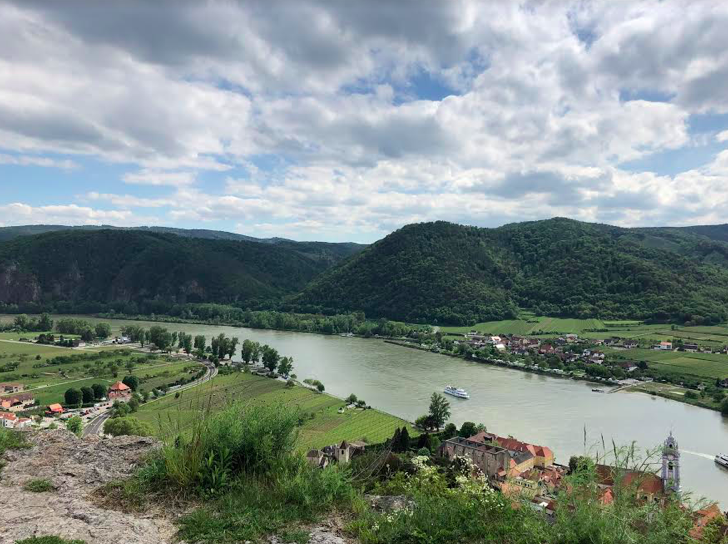Castle in Austria: Schloss Durnstein
Schloss Dürnstein
In the heart of Austria, towering above the beautiful winegrowing valley called the Wachau, stand the ruins of Dürnstein. Clinging to the edge of a steep rock face, overlooking the River Danube (also known as the Donau) are the remnants of the medieval architecture of this once busy stronghold.
From its look-out position high up, nothing moving – neither on the river nor in the valley below – would go unobserved by the watchmen of its towering turrets. But now the few remaining standing walls hold only the memories of the lords and ladies, the watchmen and knights, the cooks and servants – and the prisoners – of bygone times.
Schloss Dürnstein, as it is locally known, was erected in the 12thcentury under the instruction of Saint Leopold III of Austria. It belonged first to the rulers of Austria, the family of Babenberg, until the 17thcentury, when it was attacked and partly destroyed by the Swedish army. Now it is in the hands of the State.
King Richard the Lionhearted was imprisoned in that castle, after he had insulted Duke Leopold V of Austria during the third crusade. Also, the Duke suspected that Richard was party to the assassination of Conrad, the newly elected king of Jerusalem, and a cousin of Duke Leopold.
Leopold, known as Leopold “The Virtuous”, caught Richard who was passing through Vienna, disguised, on his way home from the crusade, and imprisoned him in that castle.
Upon this, Leopold was excommunicated by the pope. The captured English king sojourned in Dürnstein’s castle dungeons for the cold moths of the winter of 1192 (December 1192 – March 1193)
Legend has it that Richard was found by a passing minstrel, Blondel, who, stopping to rest at the castle walls, sang a traditional English song. Richard recognised the tune, joined in the singing, and so was discovered.
Richard was handed over to the Holy Roman Emperor, Henry VI, who demanded that the English pay a high ransom for the release of their king. Much of that ransom money was used by Leopold to build the city wall of Vienna and to build two new cities in his realm.
Though he planned another crusade to have his excommunication publically lifted, the Duke died before that could happen. However, he received absolution on his deathbed, and so he died a son of the Church. Leopold’s grave can still be visited today at the Abbey of the Holy Cross in Austria (Stift Heiligenkreuz).
During his life, Duke Leopold V gifted a large relic of the true cross of Christ to the monastery.
He received it from the King of Jerusalem, and brought it back with him from a pilgrimage to the Holy Land.
To this day, this precious relic is treasured and venerated by the monks of Holy Cross Abbey, and the many visitors who flock to pray before it.






